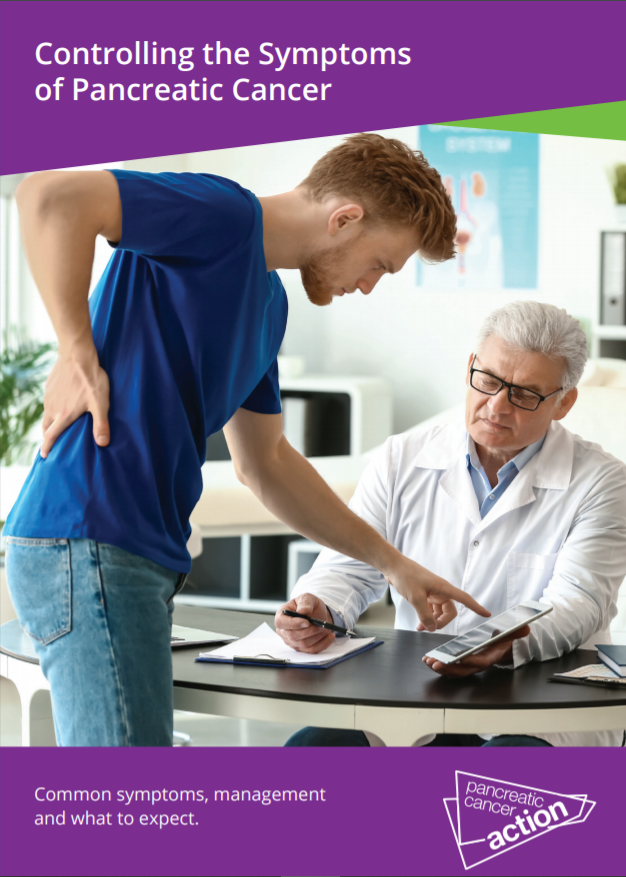Pain management
Many people with pancreatic cancer experience pain at some stage during their disease. Pain relief is best taken on time and regularly, rather than as and when you need it.
This avoids spells of uncontrolled pain. Sometimes ‘just in case’ medicines may be useful if you experience pain out of hours and need something to top up your regular medications.
Pain relief can be given through several routes. Orally (tablets or liquid medicine), via a patch on the skin or via injection.
Coeliac Plexus Nerve Block
You may be offered a coeliac plexus nerve block to stop you from feeling pain for some time. This involves injecting a substance such as a local anaesthetic or anti-inflammatory into the space around the group of nerves called the coeliac plexus, which send pain signals to the brain. A needle is inserted into the space around your spine with x-ray
guidance or endoscopy and the medication delivered. There are some potential complications to having this treatment that your doctor will discuss with you. It is often used to treat people who do not respond well to other methods of pain relief.
Syringe Drivers
Syringe drivers are sometimes used to provide medications if you cannot swallow well or are vomiting. Syringe drivers deliver a continuous infusion of medication to you, and therefore the medication does not come in peaks and troughs like it would with some of the other methods.
The syringe driver works by placing a small needle into the skin and delivering the medication through a battery powered pump. The box for a syringe driver is small and can be carried around or tucked beside you when you are resting. The syringe driver allows for management of multiple symptoms such as pain, nausea and vomiting and can be given in any setting not just in hospital.
Choice of pain treatment
How your pain is treated will depend on the cause. Sometimes it may be because of a blockage caused by the tumour. Pain relief can come with side effects such as constipation and your medical team will advise you on this and how to treat or minimise them. Other ways of controlling pain yourself, without the use of medication include breathing exercises, distraction techniques and massage.
 The information provided in this site, or through links to other websites, is not a substitute for medical or professional care and should not be relied upon as such. Read our disclaimer.
The information provided in this site, or through links to other websites, is not a substitute for medical or professional care and should not be relied upon as such. Read our disclaimer.
Sources and references for this information product will be supplied on request. Please contact us quoting the Information Product number below:
| Information Product № |
PCA0013v1 |
Published |
15/10/2019 |
| Last Updated |
21/04/2022 |
Next Review Due |
21/04/2025 |
|---|

 The information provided in this site, or through links to other websites, is not a substitute for medical or professional care and should not be relied upon as such.
The information provided in this site, or through links to other websites, is not a substitute for medical or professional care and should not be relied upon as such.